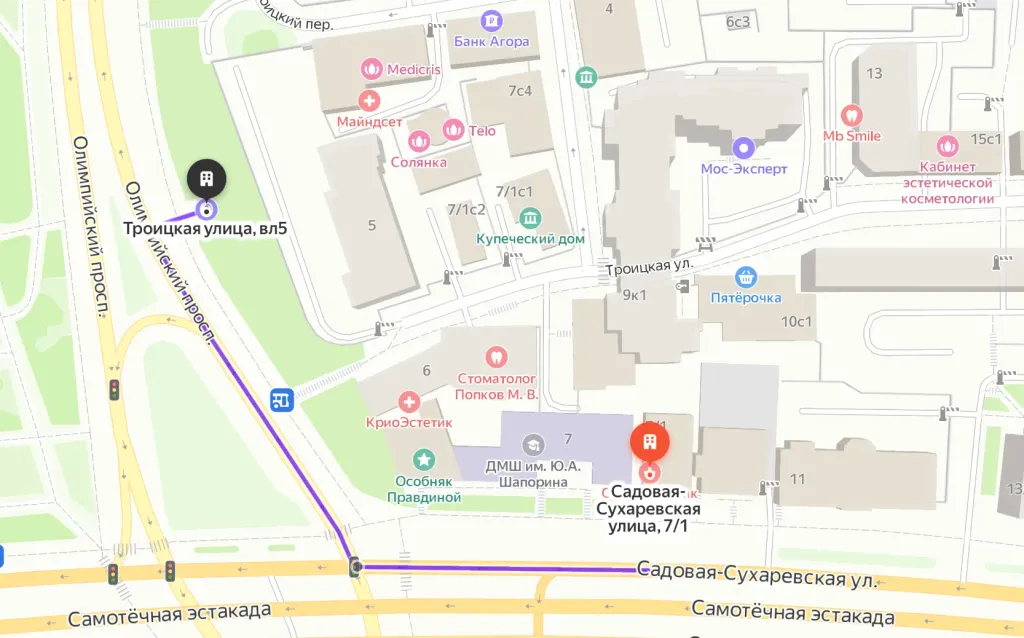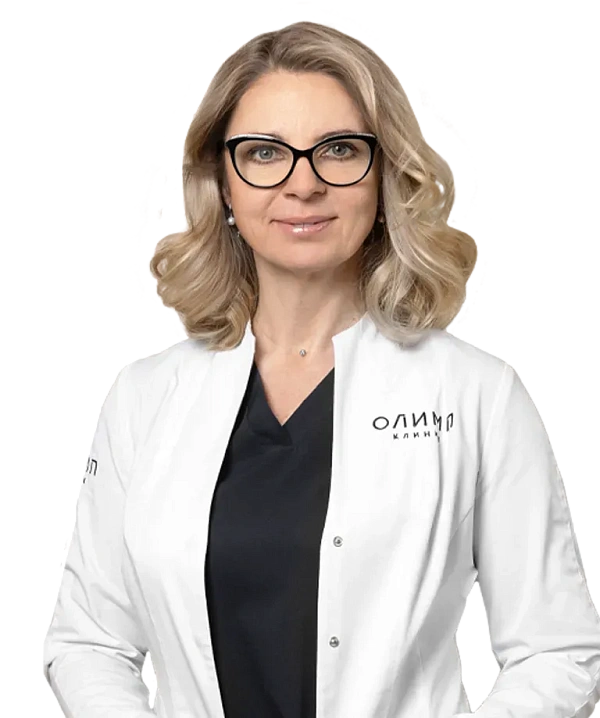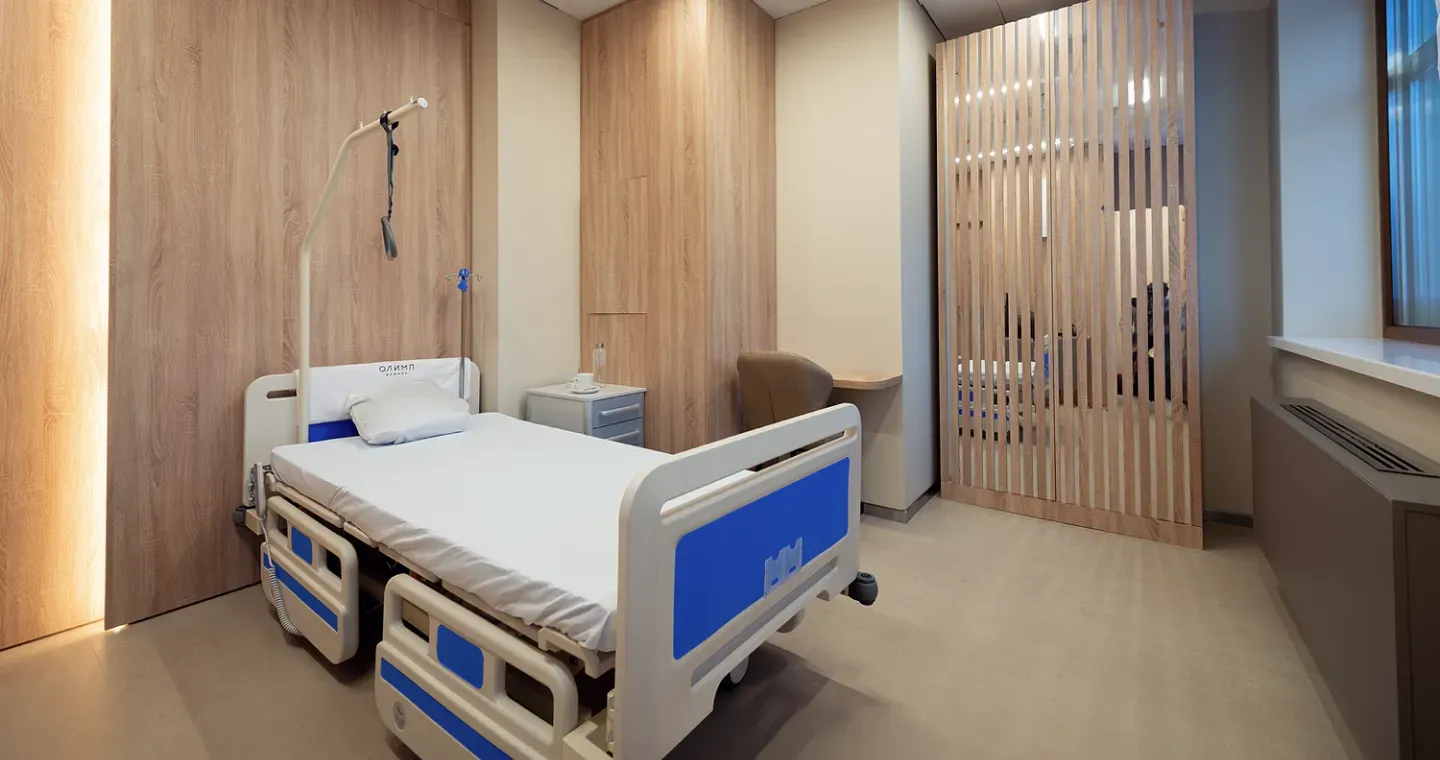Laparoscopy in gynecology
A minimally invasive surgical procedure that is performed through small punctures in the anterior abdominal wall using a laparoscope equipped with a high-resolution video camera.

Laparoscopy is a method of diagnosis and treatment of gynecological diseases: endometriosis, uterine fibroids, ovarian cysts, ectopic pregnancy, adhesions in the pelvis, infertility, oncological diseases.
During laparoscopy, surgical instruments and a laparoscope are inserted through small punctures on the abdominal wall, which allows the surgeon to see the pelvic cavity on the screen in an enlarged form. The wide view of the video camera allows you to look into any “corner" of the abdominal cavity. By introducing gas into the abdominal cavity, a space is created for safe manipulation, which reduces the risk of damage to surrounding organs. Laparoscopy has a diagnostic accuracy close to 100%, which makes it not only a therapeutic, but also a diagnostic method capable of revealing hidden pathologies that are inaccessible to other research methods.
Ultrasound of the pelvic organs to assess the condition of the uterus, tubes and ovaries. General blood test, coagulogram, biochemical blood test. Electrocardiogram (ECG) and consultation with an anesthesiologist to choose the method of anesthesia. Tests for infectious diseases to exclude contraindications to surgery.
The procedure is performed under general anesthesia. Surgical instruments and a laparoscope with a camera are inserted into the abdominal cavity through several small punctures, allowing the surgeon to accurately control his actions. Depending on the indications, laparoscopy may include various surgical procedures, such as removal of ovarian cysts, fibroids, restoration of patency of the fallopian tubes or treatment of endometriosis.
Laparoscopes with a high-resolution camera for visualization of pelvic organs. Surgical instruments for minimally invasive manipulations through small incisions. Gas systems to create free space in the abdominal cavity. Electrosurgical units for low-traumatic and bloodless work on organs.
After laparoscopy, recovery is much faster than after abdominal surgery. The patient can be discharged from the clinic in 24 hours, and full recovery takes about 1-2 weeks. It is recommended to avoid physical activity and sexual intercourse during this time. Pain after surgery is minimal and does not require taking strong painkillers. A full return to active life is possible after 2-4 weeks, depending on the amount of intervention.
Benefits
Minimal injury
Laparoscopy does not require large incisions, which reduces the risk of adhesions and shortens the recovery period.
High diagnostic accuracy
Laparoscopic imaging allows you to detect pathologies with an accuracy of up to 100%.
A short period of rehabilitation
Patients can return to normal life within 1-2 weeks after surgery.
Preservation of reproductive function
Laparoscopy allows you to perform organ-preserving operations, which is important for women planning pregnancy.
Frequently Asked Questions
What are the indications for laparoscopy in gynecology?
Can laparoscopy improve the chances of pregnancy?
Didn't find an answer to your question?
You can describe your problem in detail and ask a question to the doctor. He will answer you and help you find a solution
Specialists
Find a SpecialistDoctor of the highest category, surgical obstetrician-gynaecologist specialising in anti-age and bioregenerative medicine, oncologist
Similar referral activities
Endoscopic removal of epithelial formations of the gastrointestinal tract (removal of polyps)
Most gastrointestinal polyps belong to precancerous conditions, and colon polyps are essentially the only way to develop cancer, therefore they require mandatory removal.
Pediatric urologist appointment
Specialist consultation on diagnostics and treatment of genitourinary system diseases in children and adolescents under 18.
Pediatric ophthalmologist appointment
Specialist consultation aimed at visual impairment diagnostics and treatment in children of any age.
Pediatric neurologist appointment
Specialist consultation aimed at detecting and treating disorders of the nervous system in children and adolescents under 18.
Pediatric gynecologist appointment
Consultation intended to assess sexual development, prevention and treatment of gynecological diseases in girls under 18.
Pediatric GI specialist appointment
Specialist consultation on diagnostics and treatment of gastrointestinal tract diseases in children of any age.
News & Media
All news and mediaThe III All-Russian Progress Conference "Aesthetic Gynecology and Perineology: balance of beauty and functionality" was held in Moscow
The event lasted from 24 to 26 May, and the theme was Aesthetic gynecology and perineology: the balance of beauty and functionality.
What to do with urinary incontinence after childbirth?
Find answers to your questions and feel more confident.
What is important for every woman to know about the cervix?
Everything you need to know about the cervix is now collected in one article on the website of the "Daughter-mother".
Why should your mother visit a gynecologist?
We all understand why girls should visit a gynecologist. This specialist will help solve various problems related to women's health — from pregnancy management to the prevention of sexually transmitted diseases. However, over time, when women get out of reproductive age, they begin to contact a gynecologist less and less often, mistakenly believing that they no longer need his help. But a gynecologist is not only about reproductive health, he can help in solving many other issues related to the female body. So what questions can your mother ask a gynecologist about?
How to strengthen the pelvic floor muscles?
Intimate problems are often hushed up, it is awkward to talk about them even with a doctor. However, if the issue concerns the health of the pelvic floor, it is better not to waste time and immediately consult a doctor. After all, problems with this area can lead to very unpleasant consequences.
Uterine bleeding — is it worth sounding the alarm?
Abnormal uterine bleeding is when the bleeding goes beyond the normal menstrual cycle. The discharge may be more abundant or last longer. The "normal" menstrual cycle is different for everyone. But menstruation shouldn't be a problem for you.: a serious condition that prevents you from engaging in any activity, forces you to skip work or study. In the article we will tell you how to distinguish abnormal uterine bleeding.
Stress-free menopause: how hormone therapy helps women
With age, women experience a natural decrease in reproductive function, known as menopause. This process takes a long time and is accompanied by changes in the physical and emotional state, hormonal restructuring and complete cessation of menstruation. On average, menopause (the so-called last menstruation in a woman's life) occurs at the age of 45-55 years, but its precursors may appear earlier, and the process of "restructuring" the body can last for several years. A decrease in the level of female sex hormones leads to unpleasant symptoms that not only worsen the quality of life, but can also contribute to the development of serious diseases. Although menopause is not a disease and does not require treatment, there are methods to improve well-being and prevent complications. One of these methods is menopausal hormone therapy (MGT). The decision on the need and time of MGT is made by a gynecologist. To understand whether such therapy is necessary for all women, it is important to understand the nature and characteristics of menopause.
How to reach
How to get
From the Belorusskaya metro station of the Zamoskvoretskaya line - exit 4 After exiting the subway, walk through the pedestrian tunnel and climb the stairs. Move towards the railway tracks, go down the stairs immediately after them and walk along the house, then turn right onto 1st Yamskoye Pole Street. At the turn to 3rd Yamsky Pole Street, cross the road at the pedestrian crossing and continue along 1st Yamsky Field Street, after a few buildings on the left you will see Olympus Clinic MARS.
Travel time
9 minutes
Landmark
Olympus Clinic MARS sign
How to get
From the Belorusskaya metro station of the Ring line - exit 2. After exiting the subway, turn left and walk to the pedestrian crossing. Cross the road through two pedestrian crossings and move along the Tverskoy overpass. Go down the stairs immediately after the railway tracks, walk along the house, then turn right onto 1st Yamskoye Pole Street. At the turn to 3rd Yamsky Pole Street, cross the road at the pedestrian crossing and continue along 1st Yamsky Field Street, after a few buildings on the left you will see Olympus Clinic MARS
Travel time
11 minutes
Landmark
Olympus Clinic MARS sign
From the metro station "Tsvetnoy Bulvar"
1 exit to the city, then left to the Garden Ring, at the crossing to the right, crossing the boulevard, one more crossing and at the traffic light to the left. The Olymp Clinic building is located overlooking the Garden Ring to the right of the crossing. Travel time is approximately 9 minutes. Landmark - sign Olymp Clini
From the metro station "Sukharevskaya"
Exit 3 from the metro and 640 meters straight ahead, the clinic will be on the right. Landmark - sign Olymp Clinic
Parking lot map
Exit 3 from the metro and 640 meters straight ahead, the clinic will be on the right. Landmark - sign Olymp Clinic

From Sokol metro station
The last car from the center: follow the signs for Exit 5. From the glass doors to the right and go to the end of the passage. Exit to the city by the steps to the left. After exiting the crossing to the street, go straight along Leningradsky Prospekt to the intersection with Chapaevsky Lane. Next, turn right (onto Chapaevsky Lane) and walk to the Triumph Palace residential complex. Entrance to the territory: through checkpoint No. 1, opposite the Vkusville store, you will need to present your passport. After passing through the checkpoint, go up the stairs to the fountain, opposite it you will see our clinic.
Travel time
10-12 minutes
From the Airport metro station
The first car from the center: follow the Exit 2-3 signs. Turn left out of the glass doors and walk to the end of the passage. After exiting the crossing to the street, go straight along Leningradsky Prospekt to the intersection with Chapaevsky Lane. Next, turn left (onto Chapaevsky Lane) and walk to the Triumph Palace residential complex. Entrance to the territory: through checkpoint No. 1, opposite the Vkusville store, you will need to present your passport. After passing through the checkpoint, go up the stairs to the fountain, opposite it you will see our clinic.
Travel time
12-15 minutes
How to get
Entry to the territory is prohibited, but there are free city parking lots around the Triumph Palace residential complex, where you can easily find a place for your car. Free parking area:





